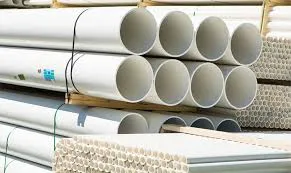Oct . 08, 2024 00:48 Back to list
ppr pipe used for manufacturers
The Role of PPR Pipes in Modern Manufacturing
In recent years, the demand for versatile and durable piping solutions has led manufacturers across various industries to explore innovative materials. One such material that has gained immense popularity is Polypropylene Random Copolymer (PPR). PPR pipes, characterized by their excellent resistance to pressure, temperature, and chemical corrosion, have become a preferred choice for manufacturers worldwide.
Advantages of PPR Pipes
One of the most notable properties of PPR pipes is their durability. Made from a high-quality thermoplastic, these pipes can withstand extreme temperatures ranging from -20°C to 95°C, making them suitable for both hot and cold water applications. Additionally, PPR pipes are resistant to scale buildup and corrosion, ensuring a longer lifespan than traditional materials like metal or PVC. This longevity translates to reduced maintenance costs and less frequent replacements, appealing to manufacturers looking to optimize their operational expenses.
Another significant advantage of PPR pipes is their lightweight nature. Unlike traditional piping materials, PPR is easy to handle and install, leading to shorter installation times and lower labor costs. This is particularly beneficial in manufacturing environments, where efficiency and time management are critical. Moreover, PPR pipes can be easily welded together, creating a seamless joint that minimizes the risk of leaks, further enhancing the system's reliability.
Applications in Manufacturing
PPR pipes are widely used in various manufacturing applications, including water distribution systems, HVAC systems, and industrial fluid transport. In industries such as food and beverage, pharmaceuticals, and chemicals, the cleanliness and non-toxicity of PPR pipes make them an ideal choice for transporting liquids. They do not contribute to leaching or contamination, ensuring that products maintain their quality and safety standards.
ppr pipe used for manufacturers

In addition to traditional applications, PPR pipes are increasingly being utilized in innovative manufacturing processes such as geothermal energy systems and solar heating applications. Their ability to handle high temperatures and pressures makes them suitable for transporting fluids in energy systems, where efficiency is paramount. This versatility is particularly appealing to manufacturers looking to adopt sustainable energy solutions and improve their environmental footprint.
Environmental Impact and Sustainability
As manufacturers face growing pressure to adopt sustainable practices, the benefits of PPR pipes extend beyond their physical properties. The production process of PPR is less energy-intensive compared to that of metal pipes, and they are fully recyclable at the end of their life cycle. Using PPR pipes can contribute to a manufacturer's sustainability goals and demonstrate a commitment to reducing environmental impact.
Moreover, PPR pipes can significantly reduce energy consumption when used in heating applications due to their excellent insulation properties. This reduction in energy usage aligns perfectly with the global push towards more sustainable manufacturing practices.
Conclusion
In conclusion, PPR pipes are transforming the landscape of modern manufacturing. Their durability, lightweight nature, and resistance to corrosion and chemical reactions make them an invaluable choice for various applications. As industries strive to enhance efficiency and sustainability, PPR pipes emerge as a practical and environmentally friendly solution. The continued adoption of this innovative material will undoubtedly shape the future of manufacturing, promoting not only operational efficiency but also a commitment to environmental stewardship.
-
High-Quality PVC Borehole Pipes Durable & Versatile Pipe Solutions
NewsJul.08,2025
-
High-Quality PVC Perforated Pipes for Efficient Drainage Leading Manufacturers & Factories
NewsJul.08,2025
-
High-Quality PVC Borehole Pipes Durable Pipe Solutions by Leading Manufacturer
NewsJul.08,2025
-
High-Quality PVC Borehole Pipes Reliable PVC Pipe Manufacturer Solutions
NewsJul.07,2025
-
High-Quality UPVC Drain Pipes Durable HDPE & Drain Pipe Solutions
NewsJul.07,2025
-
High-Quality Conduit Pipes & HDPE Conduit Fittings Manufacturer Reliable Factory Supply
NewsJul.06,2025

